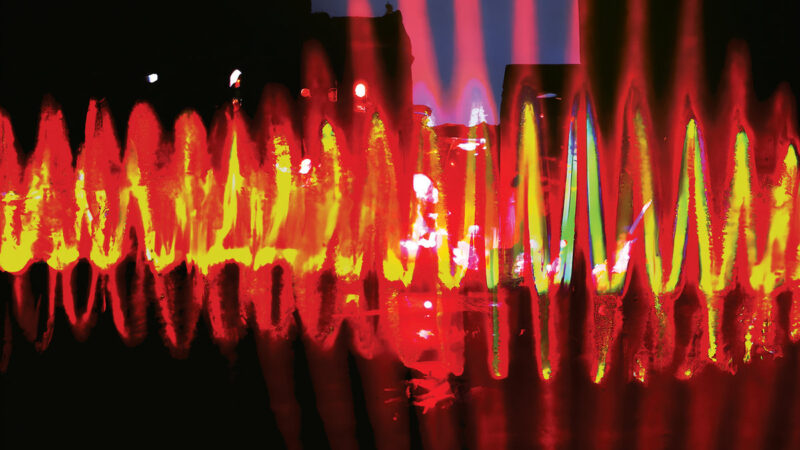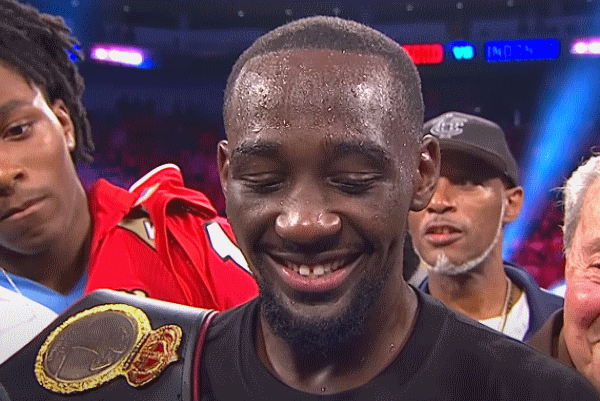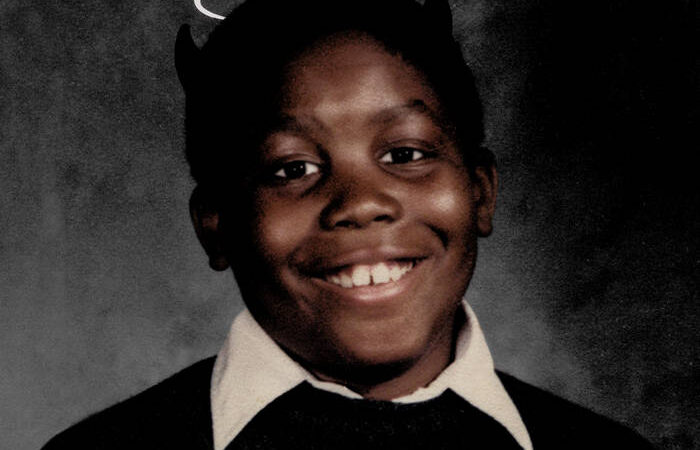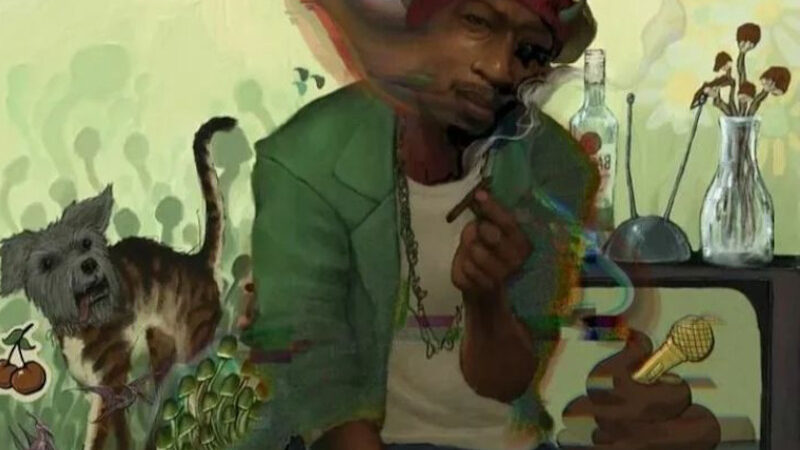Gangsta rap happily courted controversy, using it as a means to bolster sales, especially during the 1990’s. Many gangsta rappers hailed from the most infamous hoods in America, and used such credentials to their advantage. The same went for their gang affiliations and criminal records. Anything that enhanced street credibility was an asset. The press devoured it while artists and labels fed the beast. Dr. Dre famously labeled himself and fellow members of N.W.A as merely reporters who reflected the negativity in America’s streets.
It was showmanship at its most shrewd and exploitive, but young fans were hard-pressed to tell the difference. In reality there was a huge difference between the lives rappers lived and the ones they lived on wax. N.W.A. was the prototypical example. Ice Cube, the most gifted lyricist of the group, expertly played the role of a Jheri Curled gangbanger. In real life, he was the product of a middle class upbringing. Before embarking on a legendary rap career, he studied architectural drafting at the Phoenix Institute of Technology.
Years later, Cube admitted that only Eazy-E had lived anything resembling the gangsta lifestyle he portrayed on records. After all, Eazy-E was supposedly a drug dealer with ties to the Kelly Park Compton Crips. According to legend, he funded Ruthless records with his drug proceeds. Even so, reports vary widely as to the validity of such claims. In his autobiography Ruthless: A Memoir, Jerry Heller claimed that all he’d ever seen Eazy sell was weed, never cocaine. He also described Eazy’s drug dealer image as a “self-forged armor.” In his book Gangsta: Merchandizing the Rhymes of Violence, Hip-hop journalist Ronin Ro characterized Eazy as “not being able to go to certain parts of his own block” during a conversation with Naughty By Nature member KG.
But as with any other branch of Hip-Hop, gangsta rap can be deceptively complex. Certain rappers are, in fact, professional criminals who opted for a career in the music industry. Ice-T was an affiliate of the West Side Rollin 30s Original Harlem Crips in his younger days. He also dabbled in chili pimping while in the military. Eventually, he became an accomplished thief, having mastered the art of “bash” robberies. Supposedly, the authorities have videotaped evidence of his crimes. Well after Ice became a celebrity, one of his associates got picked up for an outstanding warrant while attending a friend’s funeral. He tried to use his relationship with Ice as a get out of jail free card. The arresting officers were not impressed: “Fuck Ice-T. Ice-T hangs out with a den of thieves. You tell Ice-T to keep his nose clean. We got enough film on Ice-T to make a fucking movie.”
Certain rappers on the East Coast also had criminal backgrounds. Azie “AZ” Faison was a true “ghetto celeb” in Harlem during the 1980’s. He made up to one hundred thousand dollars a week selling cocaine. His criminal career came to an abrupt end when his stash house was robbed, leaving him with multiple gunshot wounds. Soon after, he and fellow Harlemites Whip Wop, Pretty Tone Capone, and Gangster Lou formed the group Mob$tyle. Their 1989 debut, The Good, The Bad, The Ugly, featured a triple beam scale on its cover. That kind of blatant imagery would soon become the norm, even though the group never made an impact outside of New York. Faison’s rep certainly lent the group an air of legitimacy.
As the 90’s rolled on, artists’ real lives began to encroach on their rap lives, influencing both song content and marketing choices. One night in May of 1991, Geto Boys member Bushwick Bill paid his girlfriend a visit. He was drunk on Everclear, and was feeling particularly suicidal. He begged her to shoot him. When she refused, Bill began to menace their baby. During the struggle, Bill was shot in his right eye. Amazingly, he survived, though he lost his eye and had a bullet permanently lodged in his skull. While in the hospital, he was pulled out of his room for a photo-op with Willie D and Scarface. The photo could become the cover art for the Geto Boys breakthrough album, We Can’t Be Stopped.
Though the image was grotesque and exploitive, it perfectly embodied the Geto Boys mystique. When coupled with the album’s title, it sent a clear message that became an unofficial mantra for gangsta. No matter what, the show will go on. Eventually, everything becomes entertainment, even a near fatal domestic dispute. Bill, who had always been something of a mascot for the group, had now become a bizarre sideshow attraction. He dramatized the incident, as well as his struggles with dwarfism, on his solo single “Ever So Clear.”
Around the time that “Mind Playing Tricks” was burning up the charts, another future star made his presence known. Up until that point, 2Pac was known simply as the guy who had a guest verse on Digital Underground’s “Same Song.” During performances of the Humpty Dance, he simulated sex with a blow up doll while wearing bikini underwear. Such lighthearted antics in no way suggested the tortured and complex individual that he truly was. Born in East Harlem, Shakur’s father was a hustler, and his mother a member of the “Panther 21.” That mixture made for a tumultuous childhood. Pac moved around a lot. As a teenager, he attended Baltimore School for the Arts, where he received classical training in acting, among other things.
Such training gave Tupac a flair for the theatrical, a skill that would come in handy when he during his rap career. He never hesitated to reference his childhood experiences, and exhibited an openness that wasn’t common among his peers. He swiftly made use of the genre’s penchant for courting danger. The month before the release of his debut 2Pacalypse Now, he raised a 10 million dollar lawsuit against the Oakland PD, who he claimed had beaten him for jaywalking. On August 22nd of the following year, He performed at an outdoor festival in Marin County, California. He got involved in an altercation, during which a Colt Mustang was fired. 6 year old Qa’id Walker-Teal, who was 100 feet away, was hit by the stray bullet and killed as a result. As time went on, 2Pac became quite adept at weaving such incidents into narrative form. He would portray himself as both rebel and victim, a potent combination that many other artists would adopt.
Throughout the 1990’s, gangsta rappers became the consummate “bad boys” of popular music. This left an entire generation of teens shell-shocked, as the subterfuge proved hard to navigate. If these guys are just entertainers, why where they racking up felony arrests? Where was the line? It’s a question that still plagues Hip-Hop today, even as fans claim to have outgrown such notions. The more things change…you know the rest.
Follow Malice Intended on Twitter @ http://twitter.com/renaissance1977
Follow Us on Twitter @ http://twitter.com/planetill
Join Us on the Planet Ill Facebook Group for more discussion
Follow us on Networked Blog







